What are QR codes and datamatrix codes?
QR codes and datamatrix codes are both types of 2D barcodes used to store and share information. While they may look similar at first glance, they have distinct structural differences, use cases, and capabilities. Businesses and individuals often choose between these codes based on their specific needs—whether it’s for storing more data, ease of scanning, or compatibility with devices. In this article, we’ll explore these two technologies in depth and highlight the difference between QR codes and datamatrix in a clear, comprehensive way.
How do QR codes and datamatrix codes differ in appearance?
QR codes typically appear as square grids with three large square markers in three of the corners. These are called “finder patterns” and help scanners locate the code quickly. Datamatrix codes, on the other hand, consist of smaller square modules arranged in either a square or rectangular pattern with a solid border on two adjacent sides.
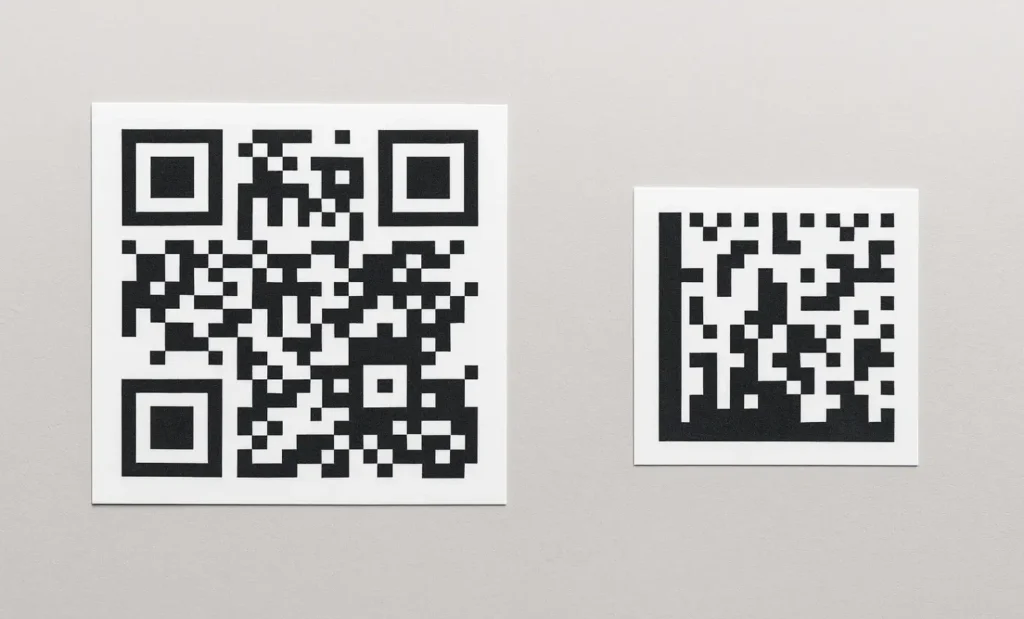
What is the origin of QR codes?
The quick response code, or QR code, was invented in 1994 by Denso Wave, a subsidiary of Toyota, in Japan. Originally developed for tracking automotive components during manufacturing, QR codes have since expanded into a wide range of applications including marketing, mobile payments, and product packaging.
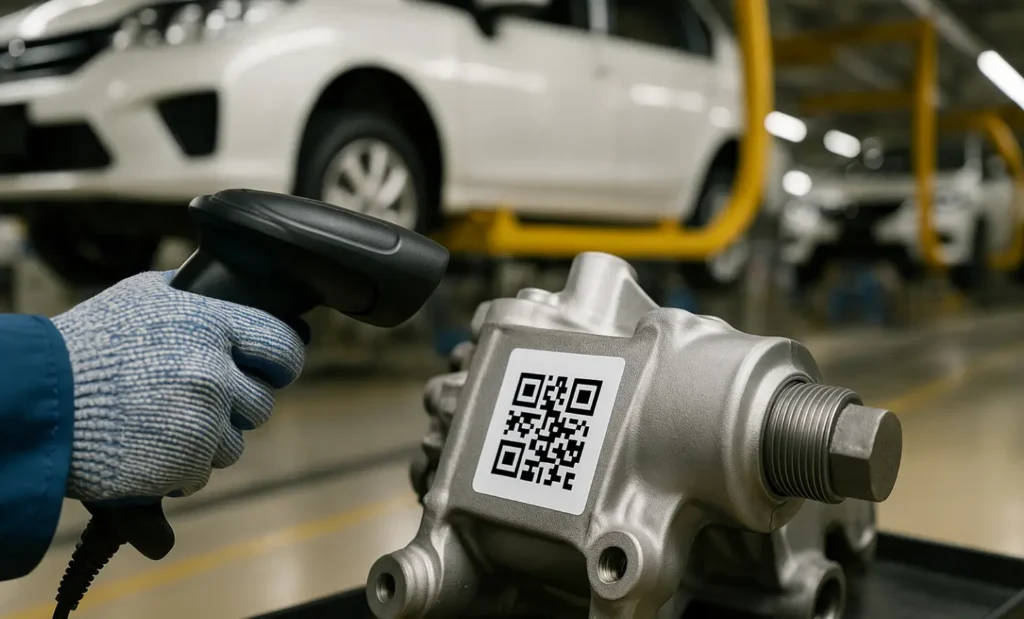
Where did datamatrix codes originate?
Datamatrix codes were developed in the 1980s by International Data Matrix, Inc. These codes became popular in industrial settings, particularly in the aerospace and electronics industries, where the marking of small parts with high-density codes was essential.
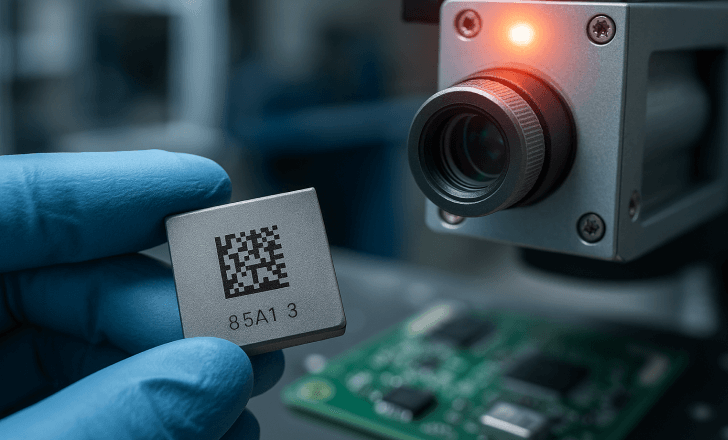
What is the structure of a QR code?
A QR code consists of black and white modules arranged in a square grid. It includes finder patterns, alignment patterns, and timing patterns to improve scanning accuracy. The data and error correction are encoded using a binary system that is read by a barcode scanner or a mobile device.
What is the structure of a datamatrix code?
Datamatrix codes consist of black and white cells arranged in either a square or rectangular pattern. A key feature is the L-shaped border, used for alignment, and the alternating pattern on the opposite sides that aids in decoding. The code’s compact structure makes it ideal for marking very small items.
What types of data can be stored in QR codes?
QR codes support numeric, alphanumeric, byte/binary, and kanji data. Their versatility in storing multi byte character sets makes them suitable for global use. QR codes can include website links, contact details, email addresses, and more.
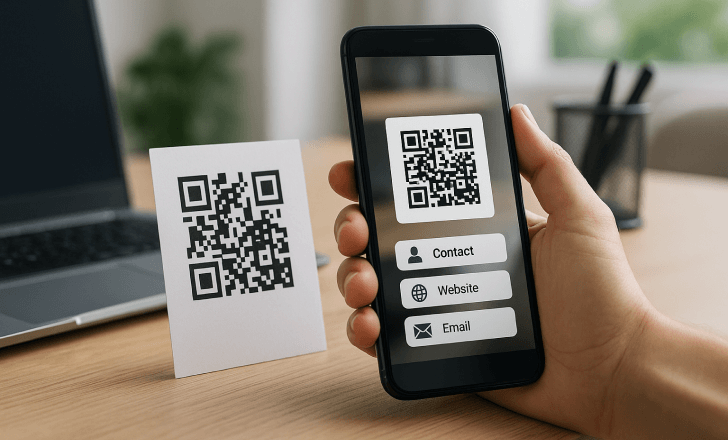
What types of data can be stored in datamatrix codes?
Datamatrix codes primarily store numeric and alphanumeric data. They are particularly useful for encoding Global Trade Item Numbers (GTINs), serial numbers, and other identifiers required for inventory, logistics, and compliance purposes.
How much data can a QR code store?
QR codes offer high data capacity. Depending on the version, a QR code can store up to 7,089 numeric characters or 2,953 alphanumeric characters. This makes them suitable for marketing, product packaging, and mobile engagement.
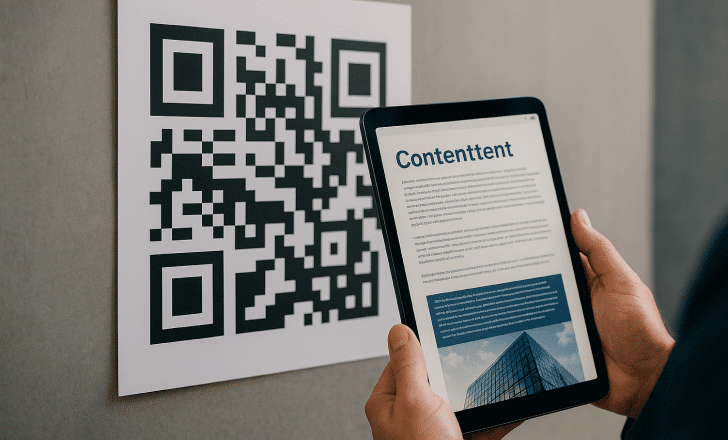
How much data can a datamatrix code store?
Datamatrix codes have a slightly smaller storage capacity compared to QR codes, but they offer higher data density. They can encode up to 2,335 alphanumeric characters or 3,116 numeric characters in a small space, making them ideal for tiny product labels.
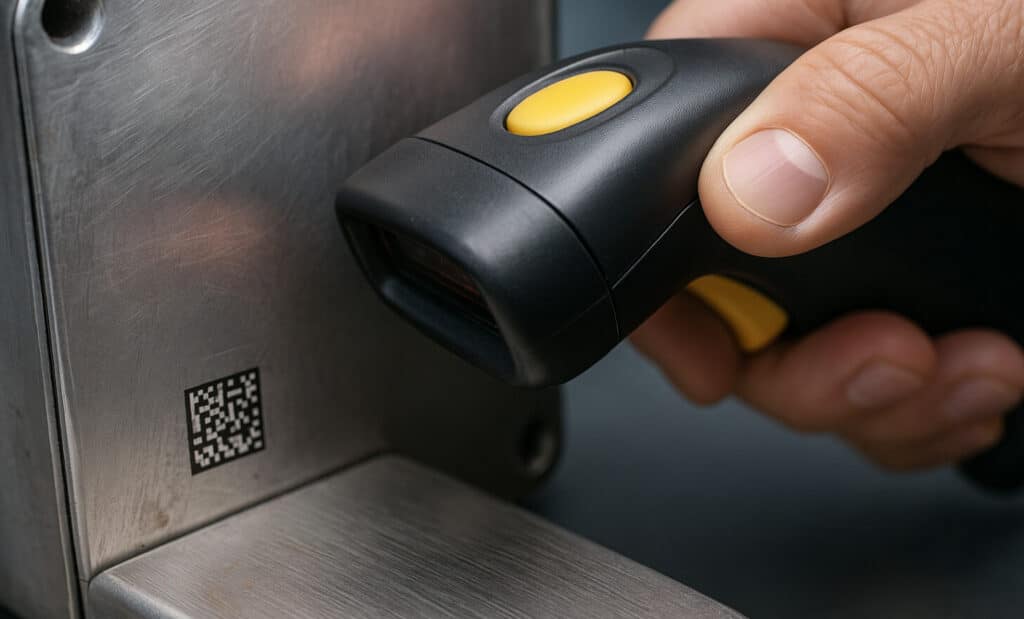
What are the error correction capabilities of QR codes?
QR codes include four levels of error correction: L (7%), M (15%), Q (25%), and H (30%). This means that even if up to 30% of the code is damaged or obscured, it can still be read correctly. This is particularly useful for physical environments where wear and tear may occur.
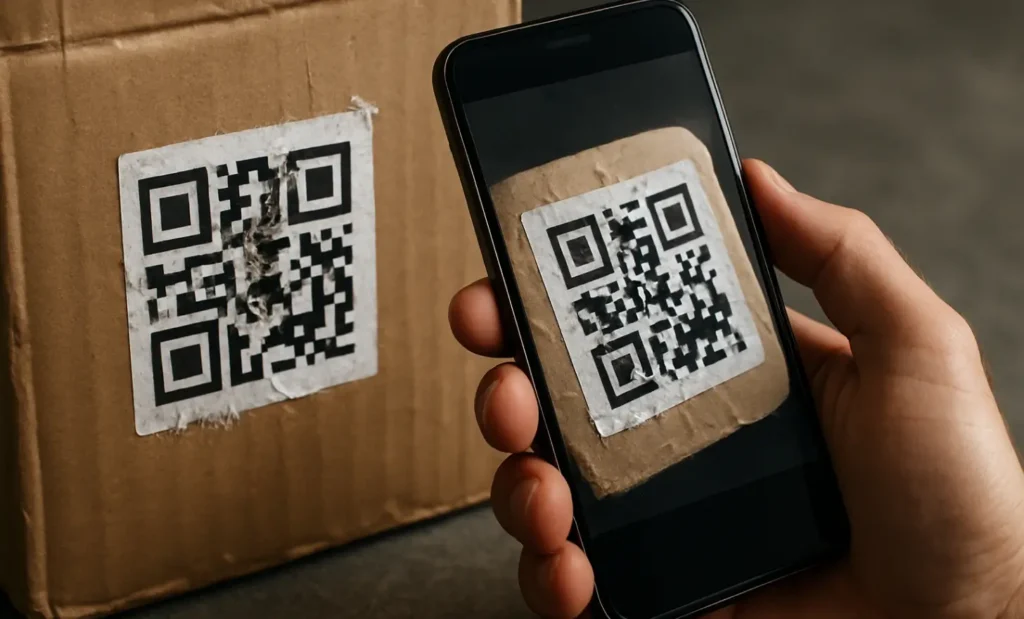
Do datamatrix codes support error correction?
Yes, datamatrix codes use error correction based on the ECC200 standard. This provides robust error correction, although the maximum correction level is generally slightly lower than that of QR codes. Still, it ensures data integrity even in damaged codes.
How fast can QR codes be scanned?
Thanks to their finder patterns, QR codes provide fast scanning even from awkward angles or distances. This is especially helpful in consumer-facing applications like restaurant menus, social media sharing, or mobile payments.
Are datamatrix codes quick to scan?
Yes, datamatrix codes also offer fast scanning, particularly when used with industrial barcode scanners. Their compact size and layout make them efficient for automated processes and direct part marking.
Which code is better for marketing purposes?
QR codes are generally preferred for marketing due to their higher visual flexibility and wider compatibility with smartphones. They are often customized for branding and linked to dynamic content such as landing pages, videos, and promotional campaigns.
Can datamatrix codes be used in marketing?
While datamatrix codes can technically be used in marketing, they are rarely chosen for consumer-facing materials. Their design is less visually engaging, and they are harder to customize compared to QR codes.
What are dynamic QR codes?
Dynamic QR codes are QR codes that can be edited after creation. Unlike static codes, the content they link to can be updated anytime. This makes them ideal for businesses needing flexible campaigns or updating links without reprinting materials.
What are the benefits of dynamic QR codes over datamatrix codes?
Dynamic QR codes, such as those generated by QR Code KIT, offer numerous advantages:
- Editable links after printing
- Advanced tracking and statistics
- Custom QR code designs
- Landing page integration
- Multiple QR types, including business cards, WhatsApp chats, file downloads, and more Datamatrix codes, in contrast, are static and lack these user engagement features.
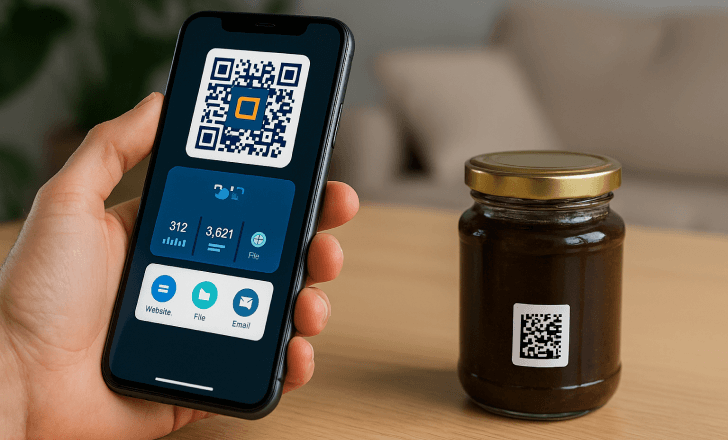
How does QR Code KIT help with QR code generation?
QR Code KIT provides a dynamic QR code generator that supports a wide variety of code types, including website URLs, business cards, social media, WhatsApp chats, and file downloads. It allows users to create custom QR codes with branding, colors, and logos.
Can I track scans with QR Code KIT?
Yes. QR Code KIT includes detailed analytics for every dynamic QR code. You can see when and where your QR code was scanned, what device was used, and how often. This data is crucial for improving marketing strategies.
What are modular landing pages in QR Code KIT?
QR Code KIT allows you to link QR codes to customizable landing pages. These modular pages can include contact info, videos, social media links, and promotional banners. It helps enhance engagement while keeping your brand consistent.
Are there customization options for QR codes?
Absolutely. With QR Code KIT, you can design custom QR codes that reflect your brand. You can change colors, add logos, and choose from various patterns to make your QR code visually appealing without compromising readability.
Can QR codes be used for file downloads?
Yes. QR Code KIT lets you create QR codes that trigger direct file downloads. Whether it’s a brochure, PDF, or presentation, your users can access it with a single scan.
What types of QR codes can I create with QR Code KIT?
With QR Code KIT, you can generate:
- Website links
- Business card/contact information
- File downloads
- WhatsApp messages
- Social media profile links
- Modular landing pages
- Feedback forms
- Restaurant menus
Are QR codes better for storing more data?
When it comes to storing more complex or longer data—like multimedia URLs, multiple contact fields, or multilingual content—QR codes generally offer more flexibility and capacity.
How are QR codes used in healthcare and regulated items?
QR codes are increasingly used in the healthcare industry for tracking regulated items, patient information, and drug packaging. Their error correction levels and scannability make them ideal for this use.
Are datamatrix codes used in healthcare?
Yes. Due to their compact size, datamatrix codes are used on small pharmaceutical items and medical devices. They are often required by regulations such as the EU Falsified Medicines Directive.

What industries prefer datamatrix codes?
Industries with small, high-value parts—like electronics, aerospace, and automotive—often prefer datamatrix codes. Their ability to be laser-marked onto tiny components is invaluable in these sectors.
Are QR codes part of public domain?
Yes. QR codes are public domain, meaning developers and businesses can use and implement them freely. This has contributed to their widespread adoption and innovation in QR code solutions.
Are datamatrix codes public domain?
Datamatrix codes are also public domain, governed by international standards like ISO/IEC 16022. This ensures they are supported across various platforms and scanners.
What devices can scan QR codes and datamatrix codes?
Most smartphones with cameras can scan QR codes natively. Datamatrix codes may require specific scanning apps, though many modern devices support them as well.
What are the best use cases for QR codes?
- Marketing materials
- Restaurant menus
- Social media promotions
- Business cards
- Event tickets
- Mobile payments
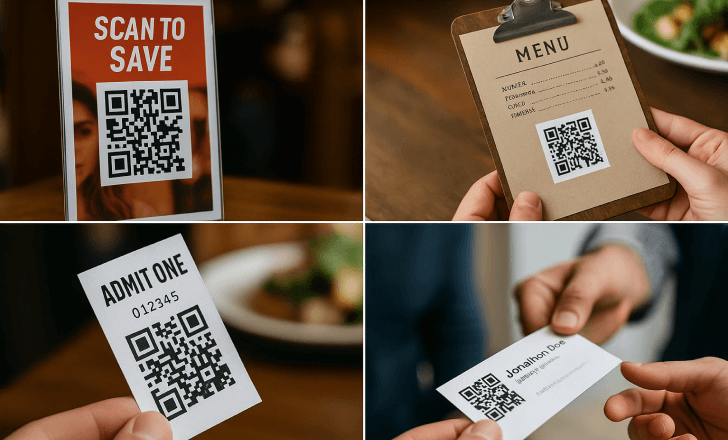
What are the best use cases for datamatrix codes?
- Electronic components
- Industrial part marking
- Aerospace and automotive items
- Healthcare packaging
- Compliance tracking
What is the future of QR codes and datamatrix?
With the rise of IoT and smart packaging, both QR codes and datamatrix will continue to evolve. QR codes will dominate consumer-facing applications, while datamatrix will remain essential in industrial and compliance-heavy sectors.
Final thoughts: which one should you choose?
Choosing between matrix and QR codes depends on your application. For consumer engagement, QR codes—especially dynamic ones powered by QR Code KIT—are the clear winner. For tiny components in industrial settings, datamatrix codes may be more suitable.
